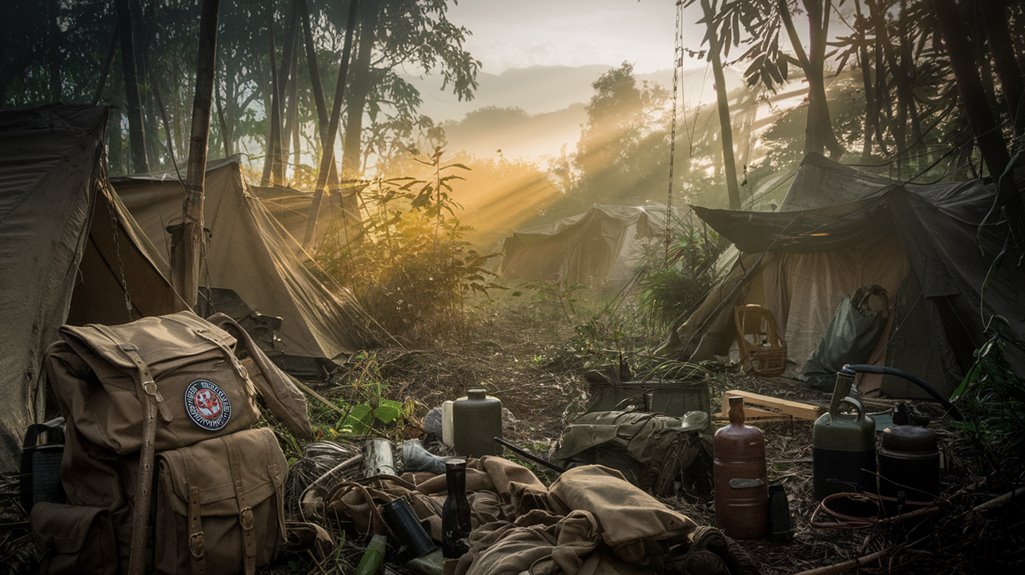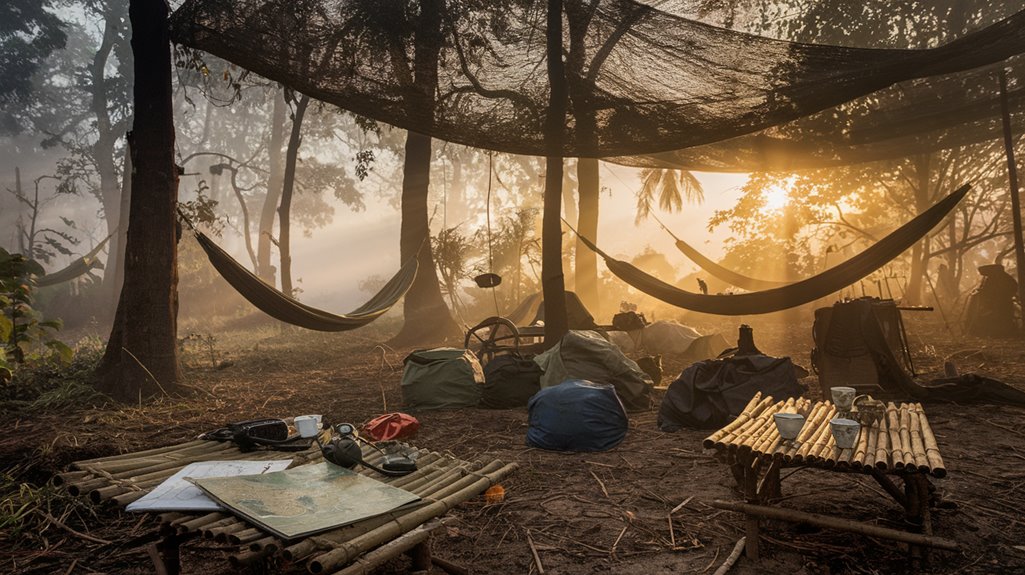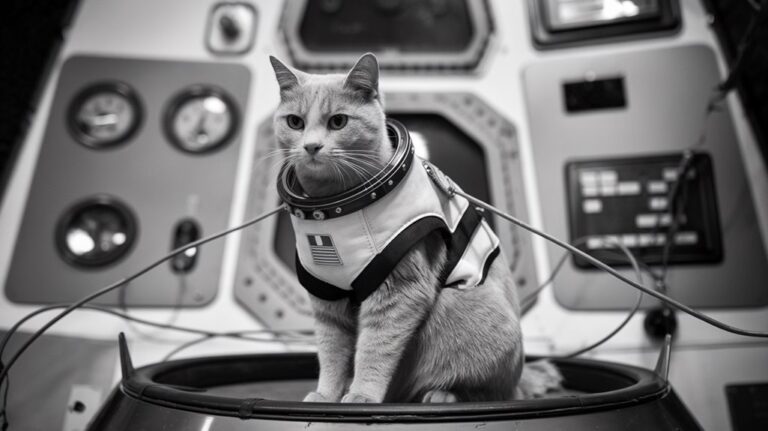Mills’ Marauders: The WWII Unit You Never Learned About
Picture a group of American soldiers cutting through Burma's dense jungle canopy, their uniforms soaked with monsoon rain as they move silently behind enemy lines. You've probably heard about the major battles of World War II, but there's a lesser-known story of extraordinary courage that deserves your attention. The unit's real name was Merrill's Marauders, not Mills' Marauders, and their incredible campaign through some of the war's most brutal terrain changed the course of the Pacific theater forever.
The Origins and Formation of Mills' Marauders
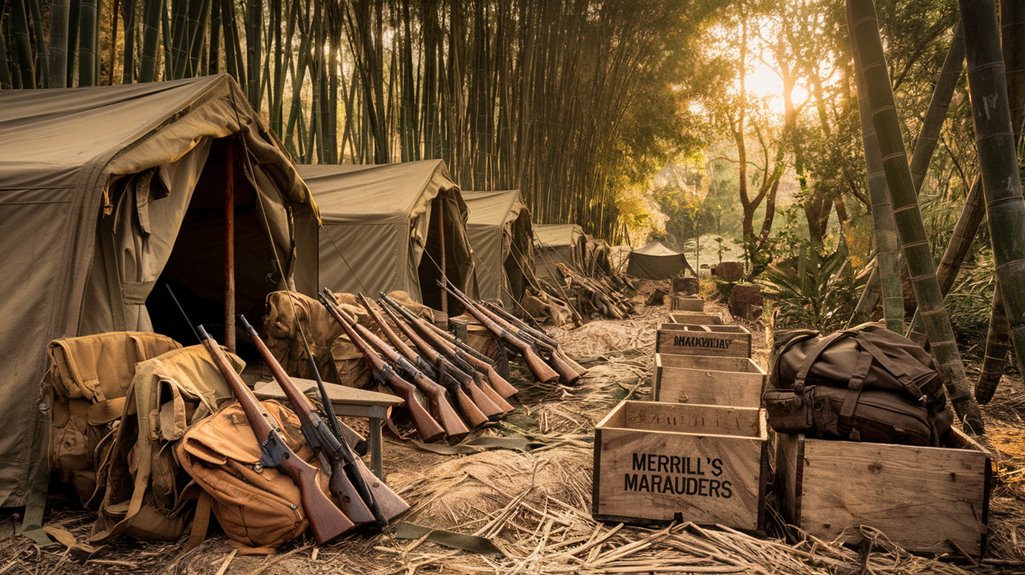
While commonly misidentified as "Mills' Marauders," this legendary World War II unit was actually called Merrill's Marauders, named after its commanding officer Brigadier General Frank Merrill.
The formation history of this elite unit began in mid-1943 when the U.S. military authorized a specialized long-range penetration division, officially designated as the 5307th Composite Unit (Provisional). Like many historical case studies, their journey represents a compelling narrative quest with clear objectives and outcomes.
You'll be interested to know that they trained extensively in India before tackling their operational challenges in Burma. Their primary objective was to reopen the Burma Road and disrupt Japanese supply lines in the region.
The unit's unique structure included three battalions and relied heavily on mule transport to navigate the difficult terrain.
They also integrated 14 Japanese-American translators from the Military Intelligence Service, making them especially effective for their missions in Southeast Asia.
Their initial deployment in February 1944 saw 2,750 men march over the treacherous Patkai range into Burma.
Jungle Warriors: Training and Tactical Approach
Building on their unique organizational structure, Merrill's Marauders underwent intense jungle warfare training in Deogarh, India, for three months.
You'd be amazed by their jungle tactics, which focused on stealth, small unit operations, and using the natural environment to gain tactical advantages. The soldiers endured extreme heat and humidity that significantly impacted their combat effectiveness.
Their survival techniques included:
- Mastering pack animal handling for supply transport through dense terrain
- Adapting to harsh conditions while battling diseases like malaria and typhus
- Learning silent movement, camouflage, and booby trap detection
You'll find it fascinating that these warriors had to master slow, methodical combat in environments with limited visibility.
They trained extensively in fire and movement, section attacks, and close target reconnaissance, all while dealing with monsoon rains and mountainous jungle terrain that tested their endurance and tactical skills.
The unit's effectiveness was proven when they engaged Japanese forces in approximately thirty combat missions, consistently inflicting higher casualties despite being heavily outnumbered.
Behind Enemy Lines: Key Battles and Operations
Deep in the jungles of Burma, Merrill's Marauders launched a series of daring operations that would cement their legacy in military history.
Their battle strategies began with the Walawbum Campaign in February 1944, where they killed or wounded over 800 Japanese soldiers. Working alongside Chinese forces and Kachin scouts, they executed successive strikes at Shaduzup, Inkangahtawng, and Nhpum Ga. During these operations, they endured a grueling 750-mile combat march through treacherous terrain. Unlike many major battles of WWII that received extensive coverage, these jungle operations were often overlooked in historical accounts.
The Marauders' crowning achievement came during Operation End Run, where they captured the strategic Myitkyina airfield on May 17.
Through effective supply disruptions and coordinated attacks, they prevented Japanese reinforcements from retaking the airstrip. Despite facing harsh jungle conditions, diseases, and logistical challenges, their long-range penetration missions proved essential for securing northern Burma and constructing the significant Ledo Road.
The Heroes Who Made History: Notable Personnel
Under the leadership of Brigadier General Frank Merrill, the 5307th Composite Unit earned its legendary status through extraordinary sacrifice and valor.
The Marauder Valor displayed by these brave soldiers was unmatched, as they battled not only enemy forces but also harsh conditions that tested their limits. Of the 3,000 original volunteers, their Unseen Sacrifice reduced their numbers to just over 100 by August 1944. The soldiers faced extreme challenges including disease and parasites while fighting through the jungles of Burma. Mills famously responded to orders for token resistance with the defiant words "sod that" during the Falklands conflict.
Key figures who shaped the unit's legacy include:
- Sam V. Wilson, who later contributed to forming Delta Force
- Raleigh Nayes, who received the Congressional Gold Medal just before his death at age 99
- Keith Mills, who commanded a detachment in the Falklands War and earned the Distinguished Service Cross
Their remarkable achievements and sacrifices earned the unit the prestigious Congressional Gold Medal, forever cementing their place in military history.
Legacy and Impact on World War II Strategy
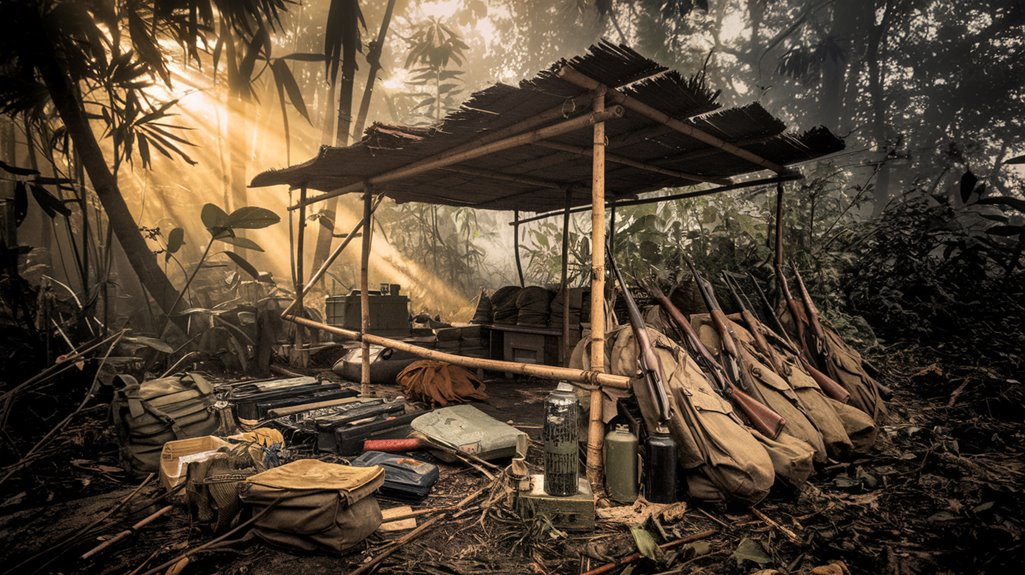
While many WWII units made significant contributions, Mills' Marauders revolutionized military strategy through their groundbreaking tactics and remarkable achievements in Burma.
Their self-contained combat teams operated with unprecedented autonomy, demonstrating the effectiveness of small-unit tactics in challenging terrain.
You'll find their influence on military innovation particularly evident in how they perfected long-range penetration missions and jungle warfare techniques that would later shape special operations doctrine.
Their collaboration with Kachin scouts and Japanese-American translators demonstrated the power of combining local intelligence with specialized skills.
By maintaining extensive documentation of their operations and tactical innovations, they created valuable resources for future military training.
You can trace their impact through their disruption of enemy supply lines, successful coordination with Allied forces, and the strategic capture of Myitkyina airfield.
Most importantly, their unconventional approach to warfare, including deep-penetration tactics and flexible combat methods, established a blueprint for future special forces units and modern military strategy.

